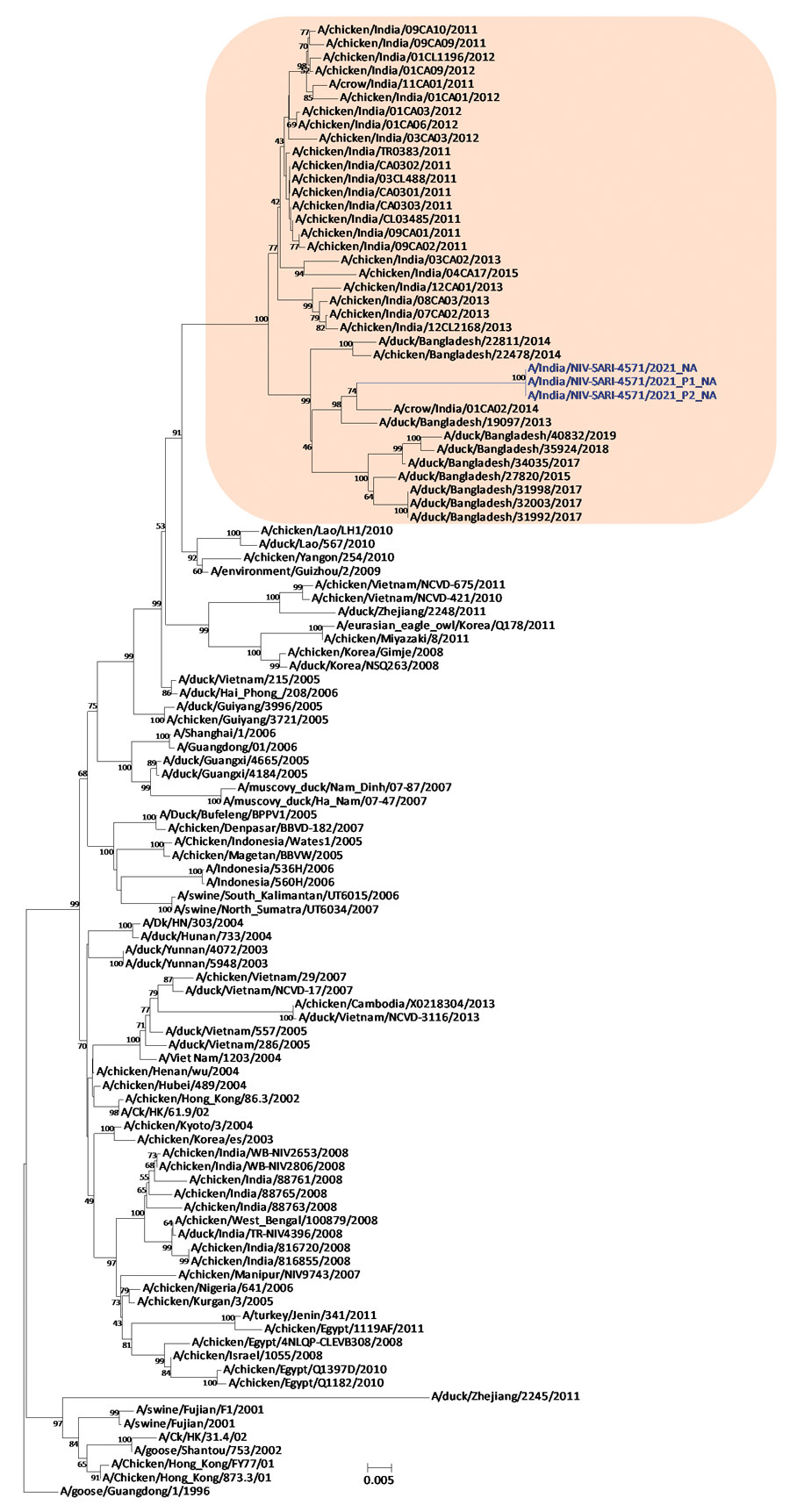Volume 28, Number 6—June 2022
Dispatch
Identification of Human Case of Avian Influenza A(H5N1) Infection, India
Figure 2

Figure 2. Neuraminidase gene phylogenetic tree constructed using the neighbor-joining method as implemented in MEGA 7 (https://www.megasoftware.net). Blue text indicates the study strains (clinical and isolate); shaded area represents the Bangladesh and India strains in clade 2.3.2.1a. Gs/Guangdong/1/96 was used as the outgroup sequence. Scale bar indicates number of nucleotide substitutions per site.
Page created: April 11, 2022
Page updated: May 22, 2022
Page reviewed: May 22, 2022
The conclusions, findings, and opinions expressed by authors contributing to this journal do not necessarily reflect the official position of the U.S. Department of Health and Human Services, the Public Health Service, the Centers for Disease Control and Prevention, or the authors' affiliated institutions. Use of trade names is for identification only and does not imply endorsement by any of the groups named above.